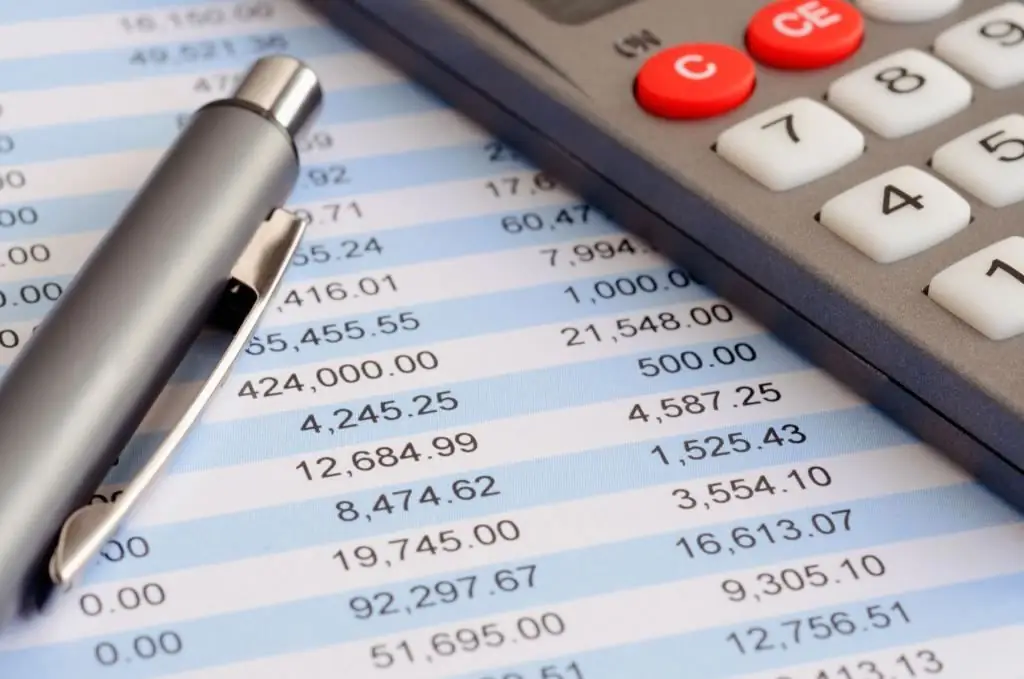2026 Author: Howard Calhoun | [email protected]. Last modified: 2025-01-24 13:10:25
Receivables in the company's balance sheet are reflected in the accounts, in the company's statements and are constantly monitored. This category of assets is considered liquid if there are no overdue debts. The amount goes into the number of doubtful debts when the calculation is delayed.

What is accounts receivable
Debt of this type may include imprests, loans issued, third party liabilities, overpayments on employee benefits. Accounts receivable means funds that must be paid by counterparties in favor of the company on the terms of a deferred payment agreed upon by both parties. Its formation occurs in the following cases:
- Deferred payment for works, goods or services rendered.
- Failure by one of the parties of the terms of the contract regarding payment for services or goods provided.
- Prepayment to the supplier in the absence of goods.
- Having an annual subscription toperiodicals.
- Overpayment in insurance premiums, taxes and payments.

Receivables management
With regard to receivables, the balance sheet necessarily monitors outstanding balances that correlate with the expected timing of payments, illiquid debts are identified and the reasons for their occurrence are clarified. Working with receivables involves collecting all possible information about the status of accounts and looking for opportunities to reduce doubtful debts. Counterparty debts are divided into several groups:
- By maturity - long-term (more than a year) and short-term receivables (line 1230 in the balance sheet, time period - up to 1 year).
- In terms of efficiency of collection methods - current (payment deadlines for it have not come), hopeless and doubtful (with overdue repayment dates, but with confidence in crediting money as soon as possible).
Under due accounts receivable means situations in which the money for the shipped goods was not received at the settlement account or the goods were not provided as soon as possible after full prepayment. The expiration of the statute of limitations can also cause the debt to be transferred to the category of overdue.
Debt Monitoring
Control of receivables in the balance sheet is carried out in several stages:
- The contract specifies the terms for crediting funds.
- Payments are monitored, the delay period of which does not exceed 7 days. The causes of the incident are being investigated, a debt repayment schedule is being developed, and cooperation is being suspended.
- If the payment is delayed for a period of 7 to 30 days, then the counterparty is charged a fine and is notified of the need to fulfill its obligations.
- A written claim is issued with a delay of 1 to 2 months.
- Long delays are cause for action.

Accounting for receivables
In the accounting department, several active-passive accounts are distinguished, the accounts receivable in the balance sheet of which is reflected. The formation of a debit balance for a group of settlement accounts indicates the occurrence of a debt. According to the coding of the Chart of Accounts, receivables are reflected in the following accounts:
- 60 or 62 - for settlements with buyers and suppliers;
- 68 or 69 - for overpayments on insurance premiums, fees and taxes;
- 70, 71 and 73 - for the calculation of employees;
- 75 if there are debts of the founders;
- 76 - for settlements with debtors of different types.

Assessment and analysis
Valuation of receivables in the balance sheet involves determining its market value on a specific date. The amount specified in the credentials may not match the result. Similar analysisused for management accounting, when conducting a comprehensive assessment of the enterprise and operations for the transfer of rights of claim. Professional experts are called upon to share assessment data with third parties.
Analysis of receivables is carried out by determining the total debts of buyers, classifying them into groups and monitoring the dynamics of changes. The results obtained are entered in the table. The financial stability of a company can be undermined by the number of long-term debts, and therefore the identification of their share is an important step in the analysis.

Where the data is reflected in the accounts receivable balance sheet
There are several lines in the balance sheet for receivables. First, net debt is fixed - the amount that the company should actually receive.
The second line indicates the initial cost of the debt - the amount that the debtors must pay according to the terms of the contract.
In practice, the amount received by the company after paying off the debt is much less than what is indicated in the documentation.
Receivables in the balance sheet are classified according to the following types of obligor:
- Domestic debtors.
- Public firms.
- Other companies that owe a certain amount.
So now it's clear what accounts receivable is. It means not only financial debts, but also untimely provision of works and services,interruptions in the supply of goods and so on.
It must be taken into account that accounts receivable is an aggregate indicator based on debt on accounting accounts.

How debt is reflected in the balance sheet
In the explanatory notes to accounting, the indicator of receivables is necessarily deciphered, since it is an important indicator. In the reports of the obsolete form, it was given in lines 230 and 240, in the modern version - in line 1230, which indicates long-term and short-term debts.
Line 1230 of the balance sheet is formed from the balance of current accounts, which are used when accounting for receivables. The totals for these accounts are taken from the debit for December 31 of the reporting year. Line 1230 of the balance sheet is represented by several accounts - 60, 62, 68, 69, 70, 71, 73, 75, 76.
When writing information to the balance sheet, the following data is entered in line 1230:
- List debts with a maturity of one year or less;
- Amounts less allowance for doubtful receivables in the balance sheet are indicated.
Line 1230 of the balance sheet does not reflect amounts with a maturity of more than one year. For such cases, line 1190 of the balance sheet is applied. The Notes to the Balance Sheet provide a full breakdown of the types and structure of receivables.
It should be taken into account that line 1230 of the balance sheet does not reflect fully repaid or written off receivables. Informationabout them, respectively, is not given in the explanations to the balance sheet.
Recommended:
Net sales in the balance sheet: string. Sales volume in the balance sheet: how to calculate?

Annually, enterprises prepare financial statements. According to the data from the balance sheet and income statement, you can determine the effectiveness of the organization, as well as calculate the main planned indicators. Provided that the management and finance department understand the meaning of terms such as profit, revenue and sales in the balance sheet
General concepts of the balance sheet: assets, liabilities, balance sheet currency

The balance sheet contains important information for assessing the company's financial results. Each section of the asset, liability, as well as the balance sheet currency is necessary to calculate many financial indicators
Synthetic accounts. Synthetic and analytical accounts, the relationship between accounts and balance

The basis for monitoring and analyzing the financial, economic, investment activities of an organization are accounting data. Their reliability and timeliness determine the relationship of the enterprise with regulatory authorities, partners and contractors, owners and founders
Formula of net assets on the balance sheet. How to calculate net assets on a balance sheet: formula. Calculation of net assets of LLC: formula

Net assets are one of the key indicators of the financial and economic efficiency of a commercial firm. How is this calculation carried out?
Accounts receivable and accounts payable is The ratio of accounts receivable to accounts payable. Inventory of receivables and payables

In the modern world, various accounting items occupy a special place in the management of any enterprise. The material presented below discusses in detail the debt obligations under the name "receivables and payables"

